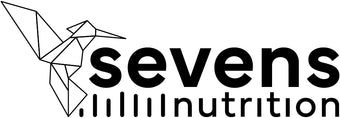How our protein recycling system ages: the role of the proteasome and autophagy
One of the greatest challenges of cellular aging is the progressive accumulation of damaged or misfolded proteins. Under normal conditions, cells have sophisticated mechanisms to detect, break down, and recycle these defective proteins, preventing their toxic accumulation. This cellular cleanup system is primarily composed of two fundamental pathways: the proteasome and autophagy .
Over the years, both pathways undergo functional decline. This decrease in protein clearance capacity translates into a greater load of abnormal proteins within the cell, which compromises its viability, triggers inflammation, and accelerates systemic aging.
The proteasome: the cellular shredder of defective proteins
The proteasome is a multiprotein complex responsible for degrading proteins tagged with ubiquitin, an intracellular labeling system that identifies aged, misfolded, or stress-damaged proteins. This degradation is highly specific and controlled, allowing the cell to eliminate waste without affecting functional proteins.
With age, the proteasome's efficiency declines. Several studies have shown that the activity of proteolytic enzymes declines, while the accumulation of oxidized proteins increases. This phenomenon is closely linked to diseases such as Alzheimer's, where protein aggregates such as beta-amyloid and tau are observed, which the proteasome can no longer effectively remove.
Autophagy: Cell Recycling and Renewal
Autophagy (literally, "self-eating") is another essential system for maintaining cellular homeostasis. Unlike the proteasome, which acts on individual proteins, autophagy can degrade entire structures such as defective organelles or large protein aggregates. During this process, the cell encapsulates the material to be eliminated in vesicles (autophagosomes), which then fuse with lysosomes for digestion.
Numerous studies have shown that autophagy declines with aging. This decline prevents cells from adapting to stress, causes the accumulation of intracellular waste, and contributes to the functional decline of key tissues such as the brain, liver, and muscle.
Factors that accelerate the deterioration of these systems
-
Oxidative stress : damages both proteins and the recycling systems themselves.
-
Chronic inflammation : alters the regulation of autophagy and proteasome.
-
Deficiency of key nutrients : such as zinc or magnesium, which are necessary for proteolytic enzymes.
-
Sedentary lifestyle and pro-inflammatory diet : inhibit cellular signals that activate autophagy, such as AMPK or SIRT1.
Nutritional interventions and supplementation to support these processes
Scientific literature suggests that certain nutrients and bioactive compounds may help maintain proteasome efficiency and stimulate autophagy:
-
Polyphenols such as those in turmeric (curcumin), present in BIO Sevens Turmeric , have been linked to the activation of autophagic pathways through the modulation of mTOR and AMPK.
-
Omega-3s of plant origin, such as those included in Omega 3 Algas Sevens , promote an anti-inflammatory environment that improves the autophagic response.
-
Magnesium , available in Magnesium Sevens , acts as an essential cofactor for many enzymatic reactions that regulate autophagy and protein degradation.
-
B vitamins and zinc , present in Sevens Multivitamins , contribute to maintaining energy metabolism and the proper functioning of cellular enzymes, including those related to these systems.
Conclusion
The proteasome and autophagy are guardians of the cellular protein environment. Their proper functioning is essential to prevent the accumulation of toxic waste and preserve cellular function over the years. As we age, their deterioration becomes one of the silent drivers of functional decline. However, through nutritional strategies, evidence-based supplementation, and an active lifestyle, it is possible to support these mechanisms and promote more resilient and healthy aging.




